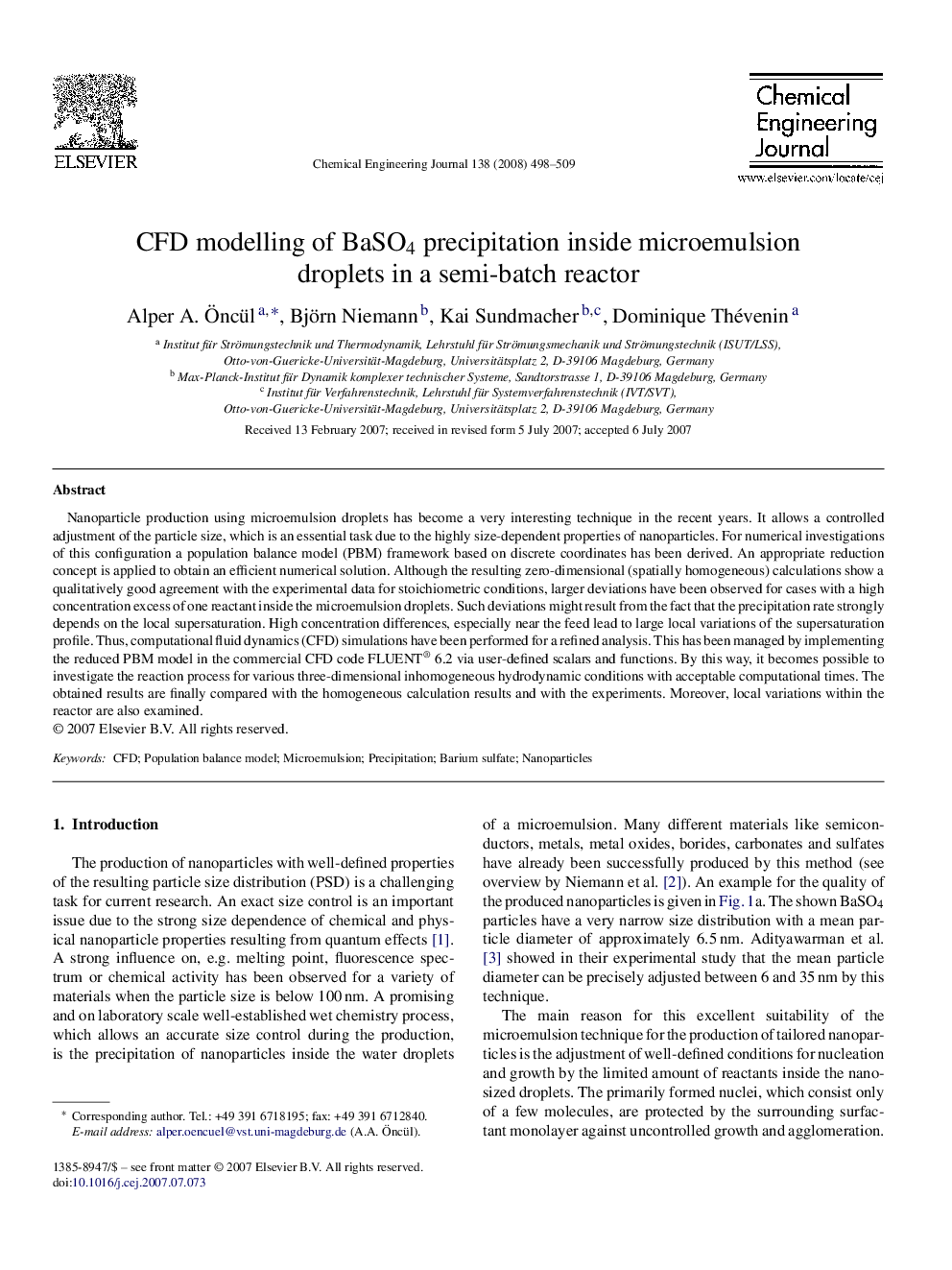| Article ID | Journal | Published Year | Pages | File Type |
|---|---|---|---|---|
| 153284 | Chemical Engineering Journal | 2008 | 12 Pages |
Nanoparticle production using microemulsion droplets has become a very interesting technique in the recent years. It allows a controlled adjustment of the particle size, which is an essential task due to the highly size-dependent properties of nanoparticles. For numerical investigations of this configuration a population balance model (PBM) framework based on discrete coordinates has been derived. An appropriate reduction concept is applied to obtain an efficient numerical solution. Although the resulting zero-dimensional (spatially homogeneous) calculations show a qualitatively good agreement with the experimental data for stoichiometric conditions, larger deviations have been observed for cases with a high concentration excess of one reactant inside the microemulsion droplets. Such deviations might result from the fact that the precipitation rate strongly depends on the local supersaturation. High concentration differences, especially near the feed lead to large local variations of the supersaturation profile. Thus, computational fluid dynamics (CFD) simulations have been performed for a refined analysis. This has been managed by implementing the reduced PBM model in the commercial CFD code FLUENT® 6.2 via user-defined scalars and functions. By this way, it becomes possible to investigate the reaction process for various three-dimensional inhomogeneous hydrodynamic conditions with acceptable computational times. The obtained results are finally compared with the homogeneous calculation results and with the experiments. Moreover, local variations within the reactor are also examined.
